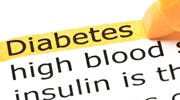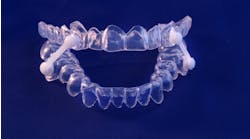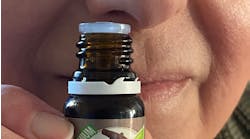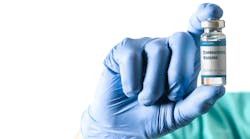NYU study successfully screens for diabetes at dental visits using oral blood
It is estimated that 8.1 million of the 29.1 million Americans living with diabetes are undiagnosed, and many who have diabetes have poor glycemic control. Given that each year many Americans visit a dental provider but not a primary care provider, dental visits may be an opportune site for diabetes screening and monitoring glucose control for many at-risk patients.
A new study published in the American Journal of Public Health confirms that using gingival crevicular blood (GCB) for hemoglobin A1c (HbA1c) testing produced values that were nearly identical to those obtained using finger stick blood (FSB), with a correlation of 0.991 between the two blood samples of 408 dental patients. Testing HbA1c is promoted by the American Diabetes Association (ADA) for diabetes diagnostic purposes and glycemic control monitoring.ADDITIONAL READING |Diabetic control and its relationship with restoration of the edentulous mouth with removable prostheses
“In light of findings from the study, the dental visit could be a useful opportunity to conduct diabetes screening among at-risk, undiagnosed patients—an important first step in identifying those who need further testing to determine their diabetes status,” said the study’s principal investigator, Dr. Shiela Strauss, associate professor of nursing and co-director of the Statistics and Data Management Core for NYU’s Colleges of Nursing and Dentistry.
The study, “The Potential for Glycemic Control Monitoring and Screening for Diabetes at Dental Visits Using Oral Blood,” builds upon an earlier pilot study in which the feasibility and acceptability to patients and dental providers of using oral blood to screen for diabetes during a routine dental exam was demonstrated.
While all persons at risk for diabetes who were never told they had the condition can potentially benefit from additional opportunities for diabetes screening, Dr. Strauss and her team found that participants who were at least forty-five years old might especially reap great benefit from diabetes screening at dental visits. The researchers also noted that HbA1c testing at dental visits could serve as an additional opportunity to determine the extent of glycemic control among those already diagnosed.
“Our study has considerable public health significance because we identify the value and importance of capitalizing on an opportunity at the dental visit (a) to screen at-risk but as yet undiagnosed patients for diabetes (especially those 45 years or older) and (b) to monitor glycemic control in those already diagnosed so as to enable them to maintain their health to the greatest extent possible,” said Dr. Strauss.
Study recruitment, participation, and data collection took place in the comprehensive care clinics at the New York University College of Dentistry (NYUCD) from June 2013 to April 2014.
Co-investigators on the study include: Mary Rosedale, PhD, PMHNP-BC, NEA-BC, Assistant Professor NYUCN; Michael A. Pesce, PhD, Professor Emeritus of Pathology and Cell Biology, Department of Pathology and Cell Biology, Columbia University Medical Center; David Rindskopf, PhD, Distinguished Professor of Educational Psychology at the Graduate School and University Center of the City University of New York; Navjot Kaur, BS, RN, NYUCN; Caroline M. Juterbock, BS, RN, NYU Langone Medical Center; Mark Wolff, DDS, PhD, Professor and Chair, Associate Dean for Pre-doctoral Clinical Education, Department of Cariology and Comprehensive Care, NYUCD; Dolores Malaspina, MD, MS, MSPH, NYU Langone Medical Center; and Ann Danoff, MD, NYU Langone Medical Center.
Acknowledgements: Funding for this study was provided by the National Institute of Dental and Craniofacial Research (grant no. 1R15DE023201).








